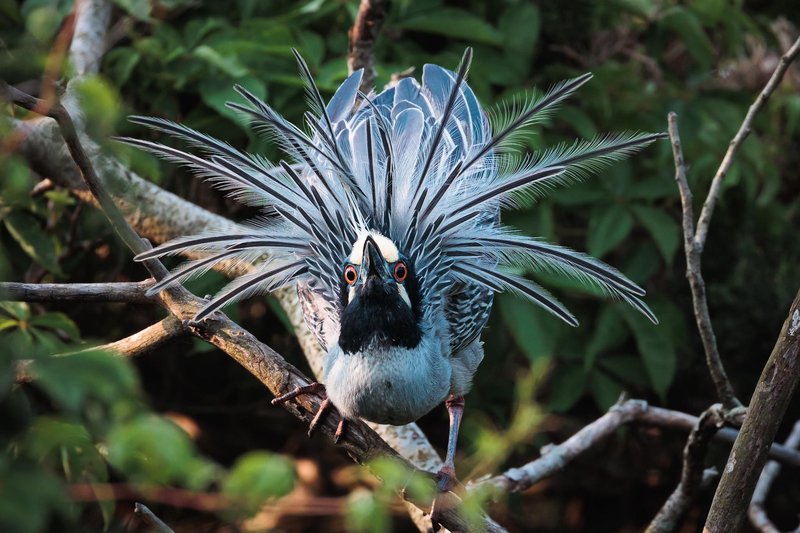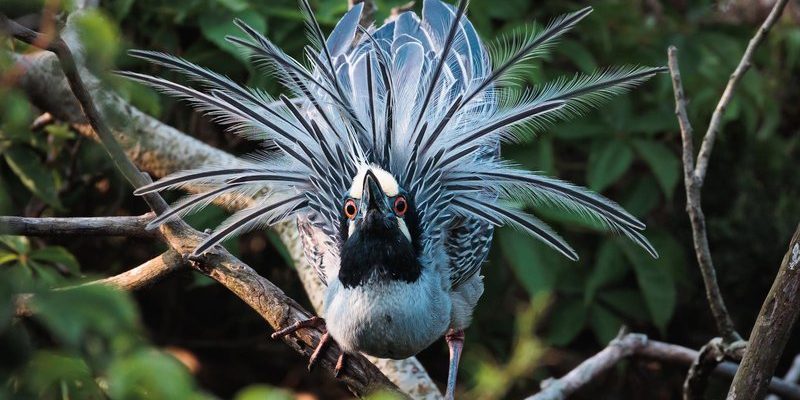
These rituals are not just about finding a mate; they’re about establishing bonds, showcasing strength, and ensuring the continuation of their species. Each movement, call, and display is part of a visual symphony that conveys messages of attraction and intent. So, if you’re curious about how these fascinating birds woo each other and what these rituals look like, you’re in the right place. Let’s dive deeper into the enchanting world of heron courtship.
The Heron’s Mating Season
Every year, herons come together for a specific courting period, typically during the spring. This is when they become most active and visible in their chosen habitats, often near lakes, rivers, or wetlands. Imagine it like a big reunion: herons returning to the same areas where they were raised or where they successfully mated in the past. This seasonal aspect is vital because the timing ensures that food is plentiful, and the conditions are right for raising chicks.
During mating season, males are particularly vocal. They engage in various calls, which can sound like a series of croaks or honks. These calls serve as an announcement to potential mates, signaling that they’re ready to pair up. You might be wondering: how do they find each other in such vast spaces? Well, herons are known for their excellent eyesight. Each male will often establish a territory and defend it vigorously, showcasing their strength to impress females.
Visual Displays: The Dance of Attraction
One of the most captivating aspects of heron courtship is their elaborate visual displays. Males will puff up their feathers, stretch their necks, and perform a graceful dance to attract a mate. It’s almost like they’re in a fashion show, trying to display the best version of themselves. Here’s how the dance usually unfolds:
- Posturing: The male heron will stand tall, often raising its head and neck to show off its size.
- Head Bobbing: They engage in rhythmic head bobbing, which is both mesmerizing and a clear signal of courtship.
- Wing Spreading: They may also spread their wings dramatically, highlighting their plumage and stature.
These displays not only serve to attract females but also help establish dominance among competing males. The more impressive the performance, the better the chances of winning a mate. Honestly, it’s quite a spectacle to witness!
The Role of Nests in Courtship
Once a pair has formed, they typically work together to build a nest. Nest building is a crucial part of the courtship process, and it often reflects their teamwork. Herons typically choose elevated spots near water for their nests, often in trees or reeds.
Both male and female herons gather twigs, reeds, and other materials to create a sturdy home. During this phase, you can see them communicating and cooperating, which is a good sign for their future together. As they work side by side, you may catch them engaging in gentle courting behaviors, such as preening each other’s feathers. This bonding time is essential as it strengthens their relationship and lays the foundation for raising chicks together.
Communication Signals Beyond Vocalizations
While calls are a big part of heron communication, there’s so much more to it than just sounds. Herons also communicate through body language and behaviors. This non-verbal communication can include:
- Bill Clacking: Male herons often make a clacking noise with their bills to signal excitement or assertiveness.
- Slow Movements: A slow, deliberate approach can signal calmness and intent, making it clear they’re not a threat.
- Eye Contact: Locking eyes can be a powerful way to establish a connection and show interest.
Each of these signals plays an important role in courtship. They help maintain harmony between the pair and ensure that both partners are on the same page.
Challenges in Heron Courtship
Just like in the human world, herons face various challenges during courtship. Competition can be fierce, as multiple males may vie for the attention of a single female. If one male is too aggressive, it can chase others away but also risk losing the female’s interest.
Additionally, environmental factors can create hurdles. Changes in water levels, pollution, and habitat destruction can impact their breeding success. Here’s the thing: if conditions aren’t right, herons may delay breeding or even abandon their nests altogether.
It’s vital for herons to adapt and respond to their environment while still trying to attract a mate, making their courtship rituals not just about romance but survival too.
The Importance of Pair Bonds
Once herons form a pair bond, it’s not just a fleeting relationship. Many herons are monogamous for the breeding season, and some even stay together for multiple seasons. This long-lasting connection allows them to raise their chicks more effectively, combining their efforts in caring for the young.
During this time, you’ll notice that pairs often hunt together, proving that teamwork is essential in the wild. They’ll coordinate their movements while fishing, ensuring they maximize their chances of catching food. This cooperative behavior not only benefits them but also sets a good example for their offspring, teaching them the importance of working together in nature.
The courtship and mating rituals of herons are nothing short of fascinating. Each dance, call, and construction of a nest tells a story of connection and survival. Watching these rituals unfold in the wild can feel like peeking into a secret world, where each movement carries meaning.
Understanding these behaviors not only gives us insight into heron life but also deepens our appreciation for wildlife. So next time you spot a heron standing still at the water’s edge, remember there’s a lot more going on than meets the eye. Their journey of courtship is truly a remarkable aspect of nature, highlighting the lengths these birds go to ensure the continuation of their legacy.

